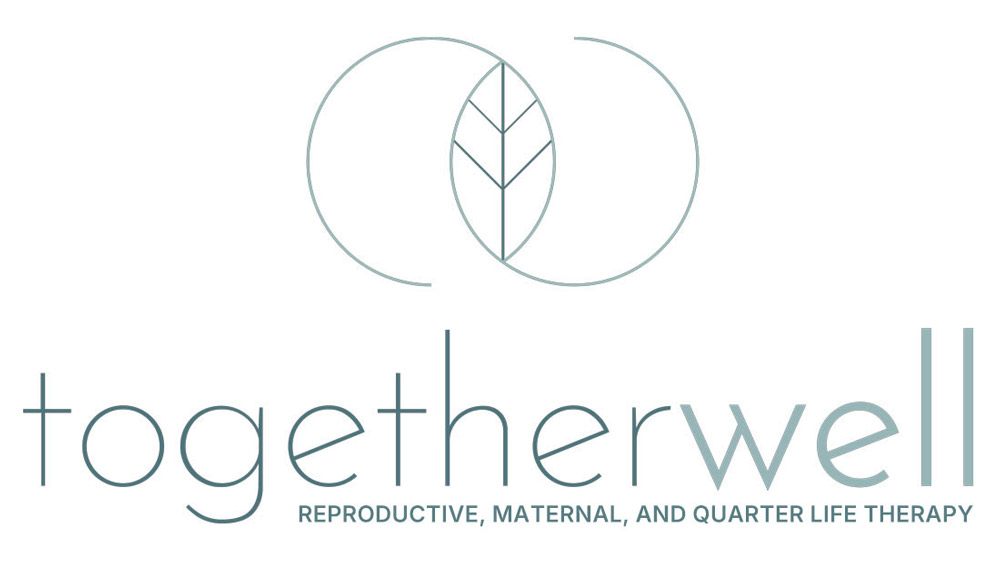As a psychotherapist specializing in perinatal and maternal mental health, one of the most common reasons women come to me is for help managing anxiety around uncertainty. Sometimes it’s the worry about whether they will be able to get pregnant or the dreaded two-week wait in their cycle for pregnancy test results. Sometimes, it’s women who are pregnant and who are having difficulty managing their worry during pregnancy, especially in the space between appointments when they are asked to just trust their bodies and babies are growing in a safe way. No matter when anxiety happens, the perinatal period is one in which most women (up to 85%) experience emotional distress – often related to the lack of control we all experience as part of the family-building process.
If you are experiencing distress (anxiety, sadness, fear, etc) during this period, you are in good company. While it can be helpful to hear it’s a normal part of the process, that doesn’t necessarily help in the moment with the discomfort it causes. I’ve written this blog in hopes that offering concrete tools, many of which I use myself will help you feel you have strategies at your disposal when you need a way to re-ground yourself.
ABC Exercise
One of the tools that my patients find to be the most effective in moments when their anxiety is starting to flood them is called (by me) the ABC exercise. It’s simple, requires no props, and can be done anywhere without anyone knowing you are doing it. The exercise works because it forces your brain to activate areas of logic and problem solving, which automatically decreases the volume on the parts of the brain that are activated by flooding. Our brains are great at a lot, but operating emotions and problem solving, both at high volume, is not one of them. Activating one requires lessening of the other.
The exercise works by going through the alphabet and picking an overall category for which you have to find a word to associate with that letter. For example….
A…Apple
B…Blueberries
C…Cantaloupe
D…Dates
You can pick any category that you want (food, colors, states, presidents, etc) and you can even switch categories each time you do it so that your brain isn’t completing the exercise by memory. Do the ABCs slowly and the whole way through even if you feel your anxiety slow before reaching the end. You can complete the cycle however many times you feel you need to.
TIP: Again, consistency is important. If you start to focus on using this every time you feel the need to re-set, it will become more intuitive and you might find you start doing it more automatically. If we don’t have a go-to exercise, we can get too overwhelmed, especially if we are already anxious, by having to sort through a list of possibilities.
Meditation
None of us can eliminate anticipatory anxiety around things that are uncertain (we often don’t have data yet on which to create a plan). The purpose of meditation is not to rid yourself of distracting thoughts, it’s to learn how to allow them to be present and gently sit with them, allowing them to pass without causing distress.
This does not mean you need to build a monastery, have a statue of Buddha, or even a trickling fountain (though you are welcome to do any of those). You don’t even need to block off 15 minutes. Studies show that the most benefit from meditation comes from consistency of practice, not duration of meditation sessions. There are some great apps that offer guided meditations (starting at 3 minutes long) that also offer specific meditations for women in the perinatal time period. I recommend checking out Mindful IVF, Headspace, Calm, or Insight.
TIP: Look at your schedule and commit to something very simple and realistic to start. You can always add time or intensity if you are enjoying it or feel you’d like to try a longer meditation.
Exercise
Moving your body in whatever way feels do-able to you (walking, jogging, stretching, cycling, yoga) is a great way to re-ground yourself when you are feeling the physical and mental effects of increasing anxiety. In addition to triggering a release of feel-good endorphins, physical movement forces our brains to shift focus away from the emotional cycling in order to focus on body mechanics (breathing, balancing, muscle activation). Again, duration is less important than consistency, so start with something you feel you can commit to short-term and build from there.
TIP: It’s always a good idea to consult with your Doctor about exercise during the perinatal period, especially if you are interested in trying something more strenuous or something you don’t routinely do.
Individual or Group Therapy
If you are feeling like your anxiety or sadness is impacting your daily functioning, it might be time to look for an individual therapist who can help identify underlying emotional patterns and develop strategies that are specific to your needs. Likewise, a therapeutic support group can be very helpful to hear ideas from others and get support from other women who are going through similar experiences at the same time. You can search for therapists and groups that focus on perinatal and maternal mental health through Psychology Today, Postpartum Support International, or The Postpartum Stress Center.
I co-run a *FREE* virtual support group through The Breastfeeding Center for women in the Maryland, DC, and Virginia areas. The group meets every Thursday at 1:30pm and is for general perinatal stress support. You can attend regularly or just as needed. Click the link to find out more and register.
Check out my website group page for regular updates to the other groups I provide, to include an infertility group and a fourth-trimester group.
Books/Resources
I feel strongly about only recommending books I’ve read myself and have discussed with patients. My website has a page dedicated to book, podcast, and app recommendations. For those struggling with perinatal anxiety, I strongly recommend Pregnancy and Postpartum Anxiety Workbook: Practical Skills to Help You Overcome Anxiety, Worry, Panic Attacks, Obsessions and Compulsions by Pamela Wiegartz.








